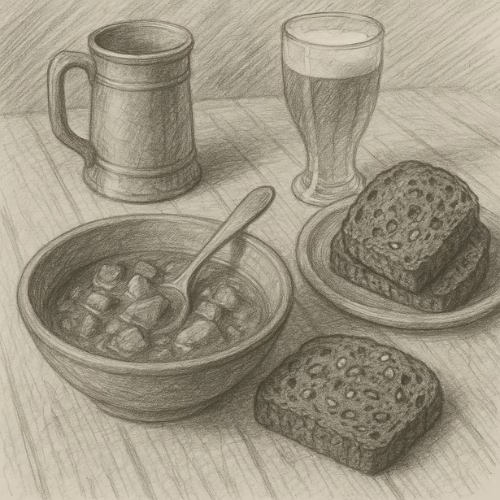I found myself inside the Niguliste Church Museum.
Not just passing through—staying.
Two hours passed before I even noticed.
I traced the stone saints with my eyes, lingered beside wooden altars, and read the names of anonymous donors etched in centuries-old parchment.
Books behind glass.
Bibles in Latin.
Paint cracking like old hands.
And I thought, maybe I’ve become old.
But not in a sad way.
When I was young, I never stayed.
Even at the Louvre, even at Notre-Dame in Paris, I was in and out in under thirty minutes.
Back then, I didn’t dislike museums—I just hadn’t yet slowed down enough to see them.
People change.
Depth grows slowly, like moss on stone.
Now, I look longer.
Now, I let art talk back.
Later, I chose a medieval-themed restaurant tucked beneath a stone archway, candles flickering in iron sconces.
I ordered Estonian food—no substitutions, no modern twists.
The black bread was my favorite.
Dense, dark, with nuts inside.
It tasted like the land: strong, strange, quietly nourishing.
And then—because life has its odd cycles—I ended up in a Thai restaurant for dinner.
Maybe it’s my own ritual:
One meal to meet the culture,
One meal to meet myself.
I never go for pizza or burgers or anything universal.
I want food that tells a story,
even if the story is just about where I come from.
A good meal can shift your mood—can remind you you’re alive.
By afternoon, the rain returned.
Not heavy, just steady.
Most tourists disappeared under awnings or into shops.
I kept walking.
What else to do?
There’s no schedule to ruin, no destination to miss.
There’s just this:
wet cobblestones, the smell of moss and wet stone, the sound of footsteps alone.
And that, somehow, is enough.



